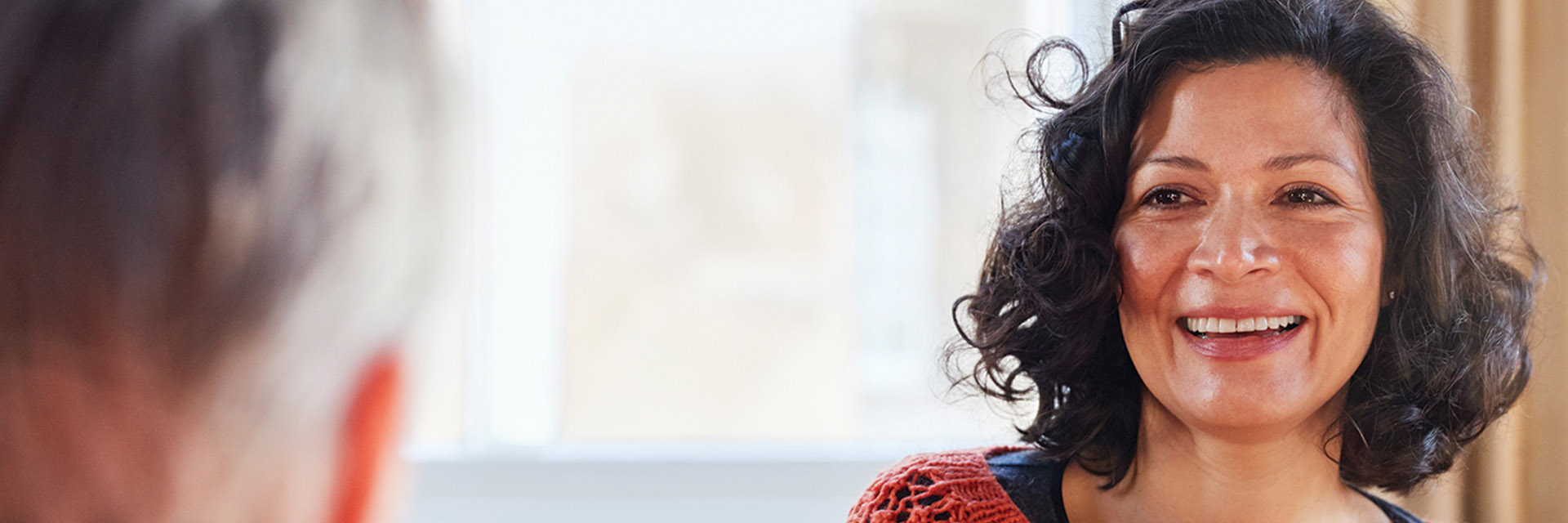-
Mammography Guidelines
- Women at average risk for breast cancer should start annual mammograms at age 40 and continue through age 74.
- Women who have an increased risk for breast cancer due to family history, a known BRCA1 or BRCA2 gene mutation or other risk factors should discuss screening options with their physician. If you have risk factors, together with your physician you can decide what’s best for you.
-
Risk Factors
Common factors that can increase the chances of developing breast cancer include:
- Age and Gender — Risk of developing breast cancer increases as you get older. The majority of advanced breast cancer cases are found in women over age 50.
- Family History of Breast Cancer — If you have a close relative who has had breast, uterine, ovarian or colon cancer.
- Menstrual Cycle — Women who get their periods early (before age 12) or went through menopause late (after age 55).
- Childbirth — Women who have never had children or who had them only after age 30.
- Obesity — Obesity has been linked to breast cancer, although this link is controversial. The theory is that obese women produce more estrogen, which can fuel the development of breast cancer.
- Radiation — If you received radiation therapy as a child or young adult to treat cancer of the chest area.
- Genes — Certain genes, such as the BRCA1 and BRCA2.
- Alcohol Use — Drinking more than one to two glasses of alcohol a day.
- Diethylstilbestrol (DES) — Women who took DES to prevent miscarriage may have an increased risk of breast cancer after age 40. This drug was given to the women from 1940 to 1960.
- Hormone Replacement Therapy (HRT) — You have a higher risk for breast cancer if you have received HRT for several years or more.
-
Breast Changes
Many breast changes occur in your breast or nipple. You may notice:
- A lump or firmness in your breast or under your arm
- The size or shape of your breast has changed
- Your nipple pointing or facing inward (inverted)
- Your nipple feeling tender
- The skin on your breast, areola or nipple is scaly, red or swollen
- Nipple discharge, or an abnormal fluid coming from the nipple
If you notice any changes in your breast or find a lump, make an appointment with your healthcare provider but don’t panic. Finding a lump can be concerning, but it’s important to remember that most lumps are not cancerous.
-
Breast Surgery
Breast surgeons on the medical staff employ many techniques to surgically treat breast cancer. Talk with your surgeon on the best possible solution for you.
Lumpectomy
A lumpectomy (also known as breast-conserving surgery) removes only the tumor and a small rim of healthy tissue around it. It leaves most of the breast skin and tissue intact.
Mastectomy
A mastectomy is usually recommended if the tumor size is large compared to breast size, if there is more than one area of cancer in the breast, or if the patient cannot undergo radiation therapy.
-
Breast Reconstruction
Breast reconstruction is achieved through several plastic surgery techniques that attempt to restore a breast to near-normal shape, appearance and size following a mastectomy. It can be a physically and an emotionally rewarding procedure for a woman who has lost a breast due to cancer or other condition. For many women, the creation of a new breast can dramatically improve self-image, self-confidence and quality of life.
Mammography is your best defense against breast cancer because it can detect the disease in its early stages, before a lump can be felt during a breast exam.




.jpg?h=3969&iar=0&w=6147&hash=8EE849B89D744ACC4C16C23DFE198B19)